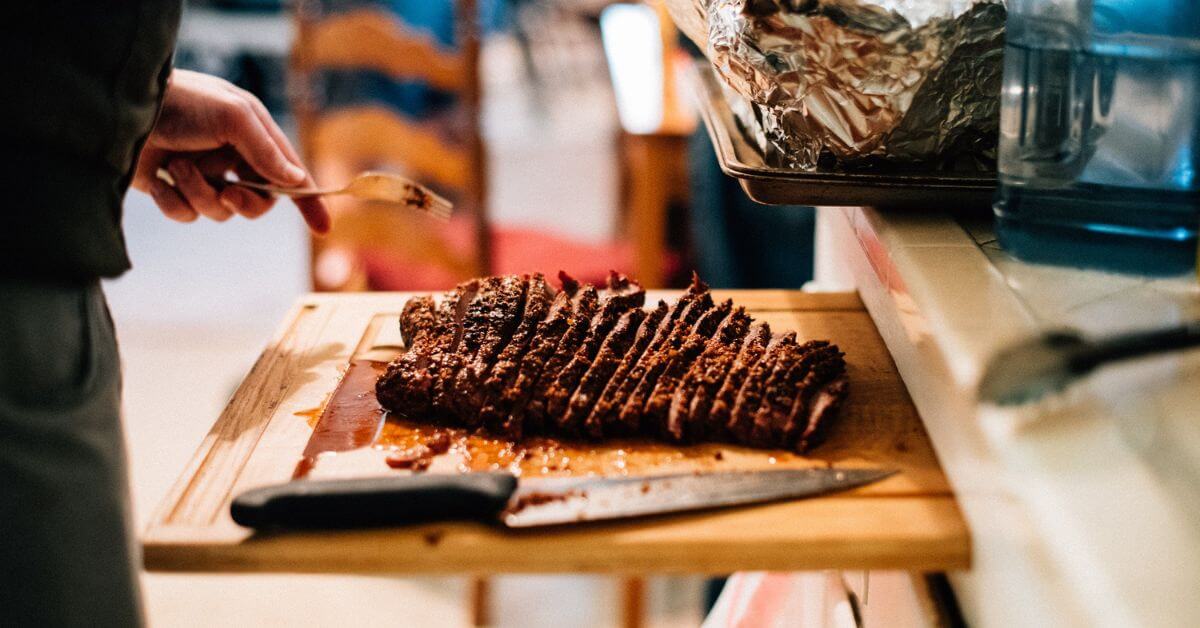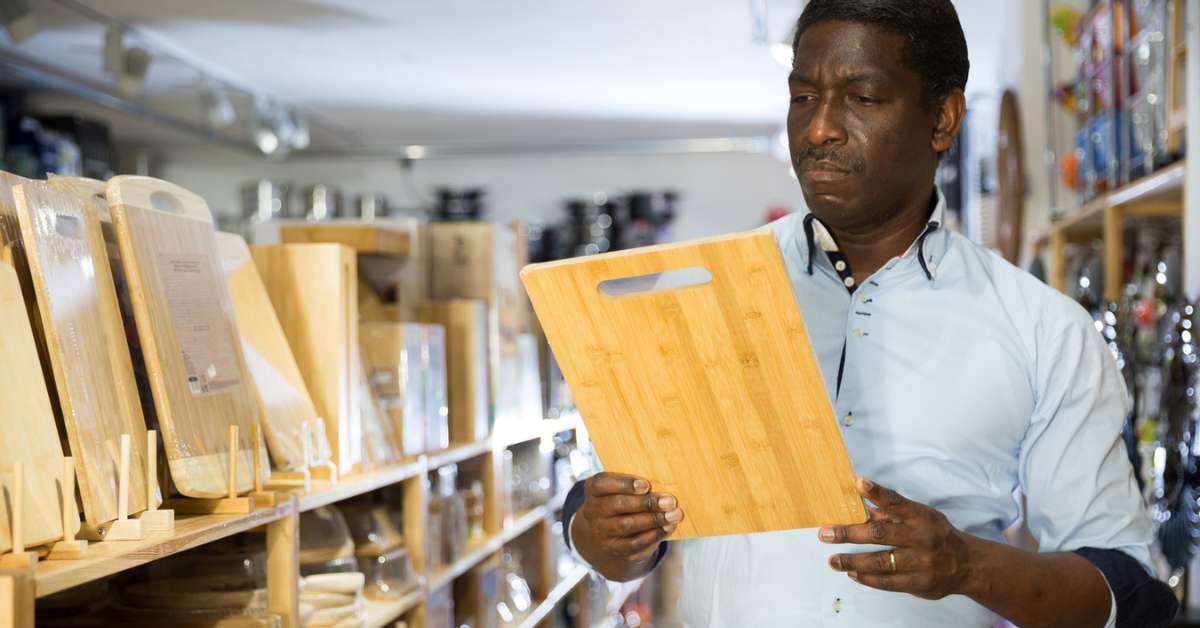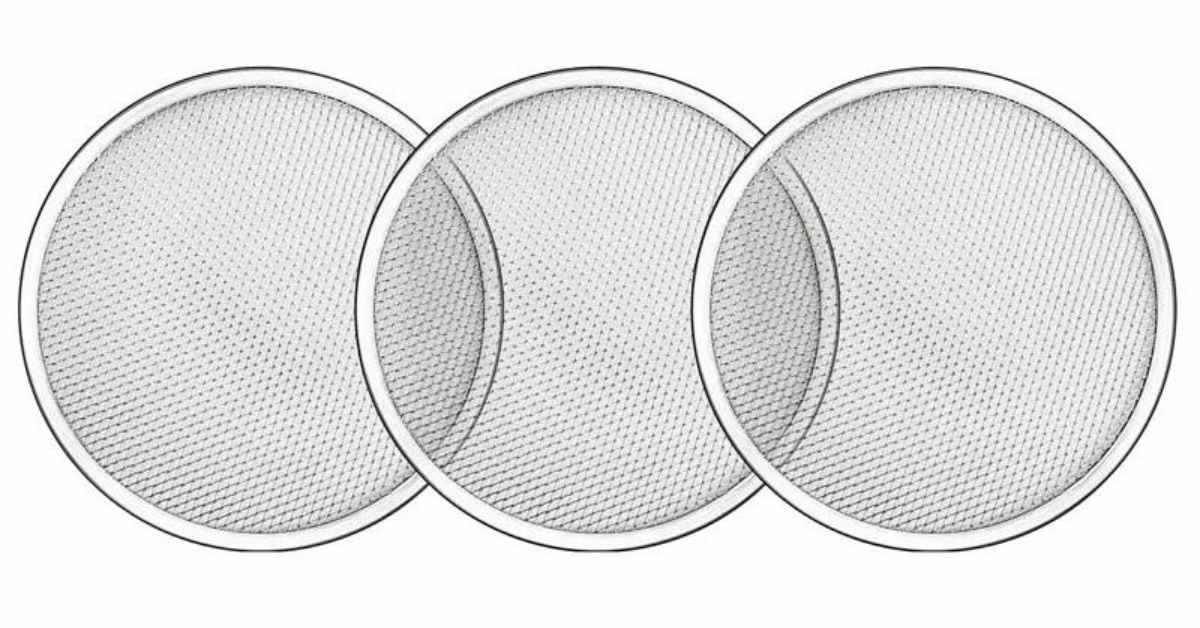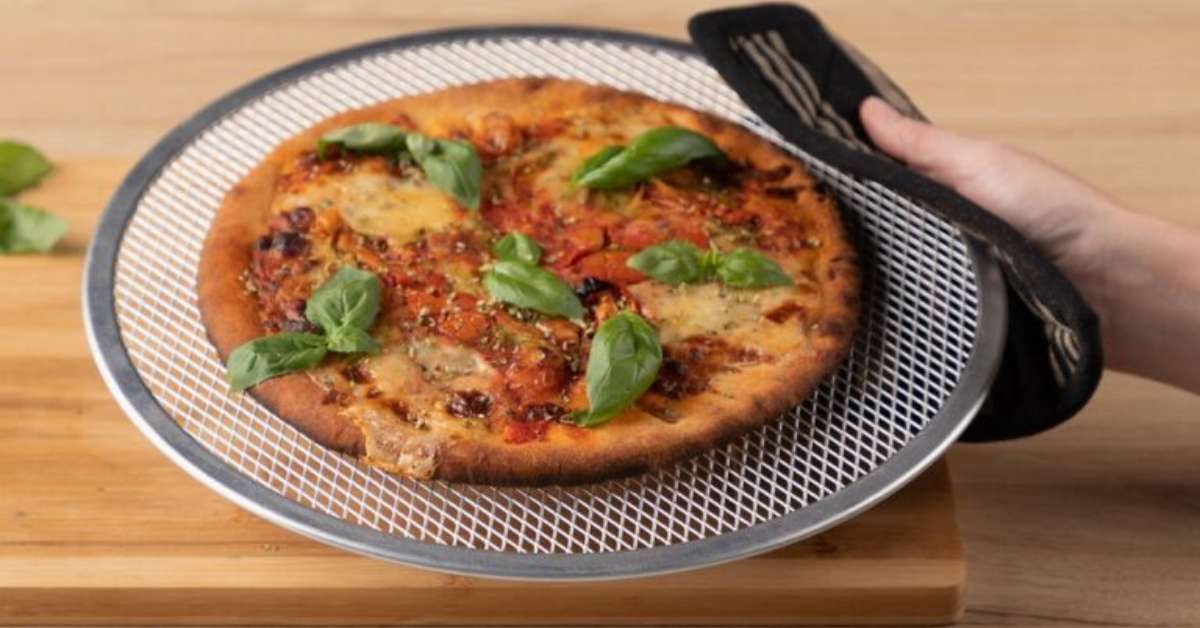When choosing the perfect brisket cut, understanding the dimensions of this flavorful cut of meat is essential. A brisket is a beef cut from the cow’s lower chest. It’s a tough, lean cut that requires slow cooking to become tender and juicy.
Knowing the dimensions of a brisket is crucial because it helps you select the correct size and shape for your cooking needs. The typical dimensions of brisket are length, width, and thickness. These measurements vary depending on the specific cut and the size of the cow.
Overall, understanding the dimensions of brisket is crucial to choosing the perfect cut for your needs. Whether smoking, grilling, or roasting, selecting the right size and shape of brisket is critical to creating a delicious and satisfying meal.
Table of Contents
ToggleUnderstanding the Basics of a Brisket
If you’re new to cooking brisket, it’s essential to understand the basics of this flavorful cut of meat. A brisket is a beef cut from the cow’s lower chest. It’s a tough, lean cut that requires slow cooking to become tender and juicy.
The brisket comprises two parts – the point and the flat. The point is the brisket’s thicker, more marbled section, while the flat is the leaner, more extended section. Both parts can be used for cooking, but the point is typically preferred for its rich flavor and juiciness.
Different types of brisket are available on the market, including USDA Prime, Choice, and Select. USDA Prime brisket is the highest quality and has the most marbling, making it the most tender and flavorful. Choice brisket is a good quality option, while Select brisket is leaner and less tender.
The Dimensions of a Brisket
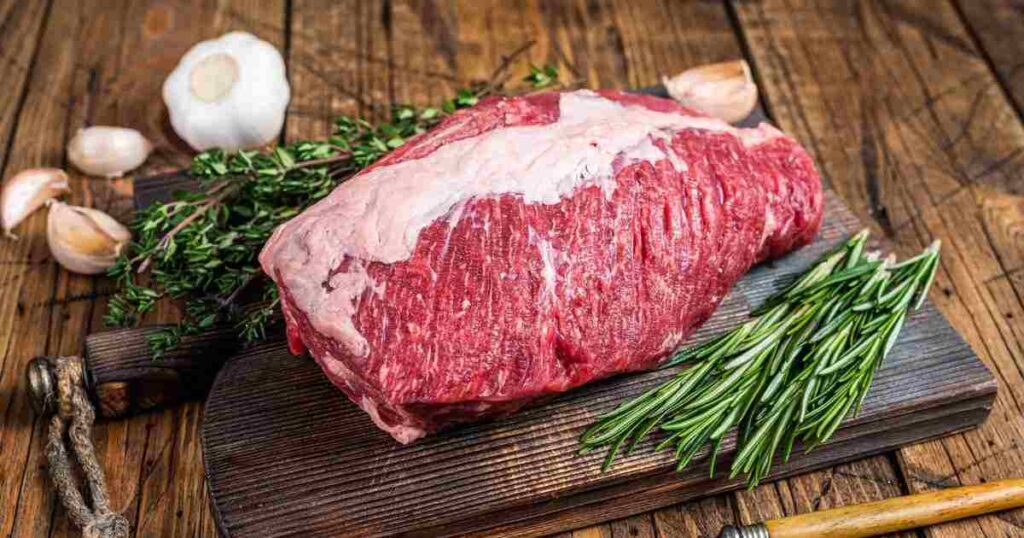
Knowing the dimensions of the brisket before cooking can help you choose the best cut for your purposes. Brisket dimensions typically comprise length, width, and thickness, which might vary depending on the cut and the size of the cow.
When choosing a brisket, its size is one of the most critical factors. The size of the brisket affects how long it takes to cook and whether or not it will fit in your cooking vessel. Choosing the right size for your cooking method is critical for a tender and tasty result.
If you’re smoking or barbecuing a brisket, you’ll want to look for a more significant cut that can withstand the long cooking time. However, a minor cut may be more appropriate for roasting a brisket.
The Importance of Brisket Dimensions
The dimensions of a brisket play a crucial role in the outcome of your dish, impacting both the cooking time and the flavor and tenderness of the meat. Choosing the right size brisket for your cooking needs ensures optimal results.
The size of the brisket will affect the cooking time, with more significant cuts requiring more cooking time than smaller ones. It’s essential to consider this when planning your meal, as you don’t want to end up with overcooked or undercooked meat.
The brisket’s dimensions also affect the meat’s flavor and tenderness. A giant brisket tends to have more fat marbling, which can result in a more flavorful and tender dish. However, a smaller brisket may be leaner and less fatty, which is ideal for those who prefer a healthier option.
Measuring a Brisket
Measuring a brisket is essential in selecting the right size for your cooking needs. Here are some step-by-step details on how to measure a brisket, including measuring techniques, tools needed, and tips for accurate measurements:
Measure the length: The length of a brisket is measured from one end to the other. Use a measuring tape to measure the length of the brisket, making sure to measure from where the two parts of the brisket meet.
Please measure the width: The width of a brisket is measured at its widest point. Use a measuring tape to measure the width of the brisket, ensuring that you measure across the thickest part of the cut.
Measure the thickness: The thickness of a brisket is measured at its thickest point. Use a ruler or caliper to measure the thickness of the brisket, making sure to measure across the center of the cut.
Use the right tools: To measure a brisket accurately, you’ll need a few tools, including a measuring tape, ruler, and caliper. A meat thermometer can also come in handy, as it can help you determine the internal temperature of the meat.
To ensure accurate measurements, it’s essential to use the right tools and techniques. Measure at the brisket’s most comprehensive and thickest points, and measure from end to end to get the correct length. Measuring the brisket at room temperature is also helpful, as the dimensions can change if the meat is cold.
You can also read: The Truth About Mold on Oyster Mushrooms (Explained 2023)
Brisket Weight and Size
The weight and size of the cut must be understood to choose the best brisket for your requirements. Here are some brisket weight and size details, including typical weight and size, serving ratios, and recommendations on estimating the correct size brisket for your needs:
Average Weight and Size
The average weight of brisket can vary depending on the cut and the breed of the animal. However, a typical whole brisket can weigh between 8 to 16 pounds and measure anywhere from 10 to 20 inches in length, 6 to 10 inches in width, and 2 to 4 inches in thickness.
Serving Ratios
When calculating the correct size brisket for your needs, it’s essential to consider serving ratios. As a general rule of thumb, you should estimate about 1/2 pound of uncooked brisket per person. This will provide enough meat for each person to have a serving size of 4 to 6 ounces.
Calculating the Right Size Brisket
To calculate the correct size brisket for your needs, you’ll need to consider the number of people you’re serving and the number of leftovers you want. As mentioned, estimate about 1/2 pound of uncooked brisket per person. Add 1/4 to 1/2 pounds of brisket per person if you want leftovers.
Tips for selecting the correct size brisket:
Remember the cooking method you plan to use when selecting the proper size brisket. For example, if you’re smoking the brisket, you’ll want to select a more significant cut to account for shrinkage during cooking. If you’re cooking in the oven, select a minor cut that will fit in your cooking vessel.
Understanding Brisket Thickness
Here are some details on understanding brisket thickness, including its importance for cooking, measuring techniques, and its impact on cooking time and tenderness:
Importance of thickness for cooking: The thickness of brisket can significantly affect the cooking process. A thicker brisket cut will take longer to cook and may require different cooking techniques, while a thinner cut may cook faster and require less time in the smoker or oven.
Measuring thickness: The thickness of the brisket can be measured using a ruler or a thickness gauge. Place the measuring tool perpendicular to the meat and record the thickness.
Impact of thickness on cooking time and tenderness: Thicker cuts of brisket will require longer cooking times to reach the desired internal temperature, while thinner cuts will cook faster. Additionally, thicker cuts may be more tender due to their high-fat content, while thinner cuts may be leaner and require more careful cooking to avoid becoming inflexible.
Brisket Shape and Appearance
When selecting the perfect brisket, the shape and appearance of the meat can provide important clues to its quality.
Different Shapes of a Brisket
Briskets can come in different shapes depending on the part of the cow they come from. The two most common shapes are the “packer cut,” which includes both the point and the flat sections of the brisket, and the “flat cut,” which includes only the flat section.
Identifying Common Features of a Quality Brisket
A quality brisket should be bright red, indicating fresh and well-aged. It should also have a good marbling of fat, which helps to keep the meat moist and flavorful during cooking. Look for a brisket with a firm texture and minimal blemishes or discolorations.
Selecting the Right Brisket
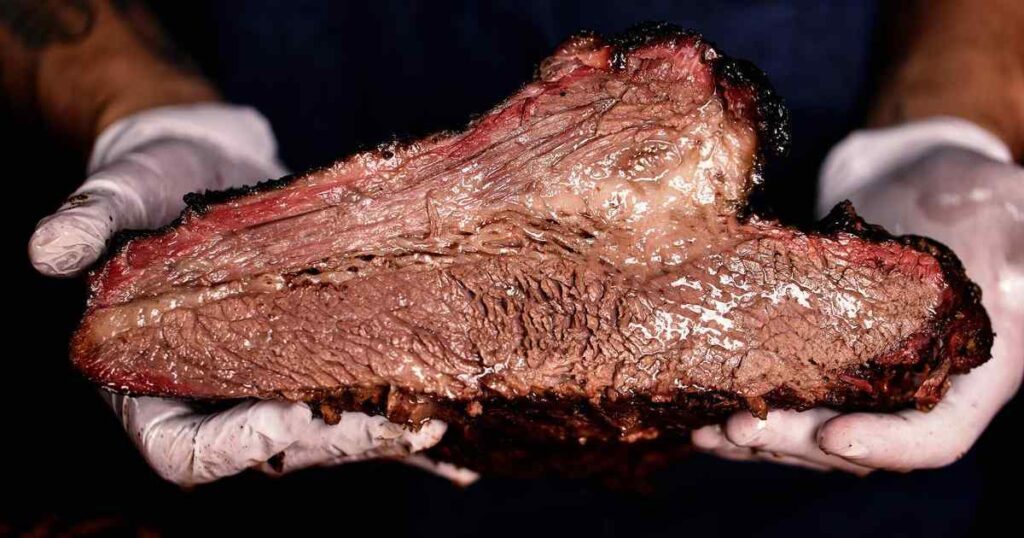
There are several factors to consider when purchasing a brisket, and a few tips to help you select the best cut for your needs.
Tips for selecting the best brisket for your needs: Look for a brisket with a good amount of fat marbling throughout the meat, as this will help keep the meat moist during cooking and enhance the flavor.
Choose a bright red brisket and firm to the touch, and avoid any with a grayish hue or a soft texture. Try to purchase a brisket that has been aged for at least two weeks, as this will help to tenderize the meat and enhance its flavor.
Factors to consider when purchasing a brisket: When selecting a brisket, consider the size and weight of the meat, as well as its shape and appearance. Think about the cooking method you plan to use and choose a brisket that is appropriate for that method.
If you plan to smoke your brisket, choose a more significant cut of meat that will take longer to cook and absorb more smoke flavor. Additionally, consider the grade of the meat and the producer, as these factors can impact the quality of the brisket.
Storing a Brisket
Properly storing your brisket is vital to maintaining its flavor and tenderness and extending its shelf life.
Proper storage techniques:
- After purchasing your brisket, refrigerate it until you are ready to cook it.
- If you don’t use it within a few days, consider freezing it to extend its shelf life.
- Wrap the brisket tightly in plastic wrap or aluminum foil to prevent freezer burn, and store it in the freezer for up to six months.
Tips for extending shelf life: To further extend the shelf life of your brisket, consider vacuum-sealing it before freezing. This can help to prevent freezer burn and keep the meat fresh for longer. Additionally, consider cutting the brisket into smaller portions before freezing so you can thaw only what you need and avoid refreezing any leftovers.
The impact of storage on flavor and tenderness: Proper storage can help to maintain the flavor and tenderness of your brisket, while improper storage can harm these qualities. For example, if the brisket is not wrapped tightly, it can dry and tough. It can develop off-flavors and spoil more quickly if exposed to air or not stored at the proper temperature.
Preparing a Brisket for Cooking
Preparing your brisket for cooking is essential in achieving the best possible flavor and tenderness. Here are some techniques for preparing a brisket:
Trimming Techniques
Before cooking your brisket, it is essential to trim any excess fat and silver skin. This not only helps to improve the flavor and texture of the meat but also ensures that it cooks evenly. Use a sharp knife to remove any thick layers of fat and silver skin, being careful not to remove too much of the meat.
Seasoning Options
There are many different seasoning options for brisket, including dry rubs, marinades, and injections. Choose a seasoning that complements the meat’s natural flavor and matches your cooking method. For example, if you are smoking your brisket, consider using a dry rub that includes smoked paprika and brown sugar.
Best Practices for Preparing a Brisket
Once you have trimmed and seasoned your brisket, it is essential to let it rest at room temperature for at least 30 minutes before cooking. This helps to ensure that the meat cooks evenly and retains its moisture. Preheat your cooking equipment to the appropriate temperature before adding the brisket.
You can also read the following: Are Red Potatoes Naturally Red? The Truth About Red Potatoes
Cooking a Brisket

Cooking a brisket is a process that requires time and patience, but the result is well worth the effort.
Choosing the correct cooking method: Several cooking methods can be used to cook a brisket, including smoking, roasting, braising, and grilling. Each method has unique advantages and disadvantages, so choosing the best method that fits your needs is crucial.
Tips for cooking a perfect brisket: To ensure a perfectly cooked brisket, there are a few tips that you can follow. First, monitor the temperature of your brisket throughout the cooking process, as temperature fluctuations can impact the tenderness of the meat.
Second, consider using a meat thermometer to ensure your brisket is cooked to the appropriate internal temperature. Finally, let your brisket rest for at least 15-30 minutes before slicing to allow the juices to redistribute throughout the meat.
Serving and Enjoying a Brisket
After you’ve cooked your brisket perfectly, slice it and serve it. You may use various slicing and presentation techniques to present your brisket and create an eye-catching display.
Slicing and presentation techniques: To ensure that your brisket looks as good as it tastes, it’s important to slice it properly. First, identify the grain’s direction, then slice against the grain to ensure maximum tenderness. Consider arranging the slices on a platter or cutting board in an attractive pattern when presenting your brisket.
Recommended side dishes and accompaniments: Brisket pairs well with various side dishes and accompaniments, such as coleslaw, macaroni and cheese, baked beans, or roasted vegetables. Consider serving your brisket with a selection of sides to create a well-rounded meal.
Conclusion
For any barbecue enthusiast, understanding the dimensions of brisket is essential for achieving that perfect smoky flavor and tenderness. This article discussed the basics of brisket, the different types, and its parts.
We also covered the importance of choosing the right size and weight for your cooking needs, measuring techniques, the impact of thickness and appearance, and tips for selecting and storing the best brisket.
Additionally, we explored the best practices for preparing and cooking brisket, and finally, we provided some tips for serving and enjoying this delicious meat. With these tips in mind, you can impress your guests with a mouth-watering brisket that will make them return for more.
FAQs
How do I know if a brisket is done cooking?
We are using a meat thermometer to check the internal temperature to know if the brisket is done cooking. The ideal temperature for a brisket is around 200-205°F.
How long should I let my brisket rest before slicing?
Letting a brisket rest before slicing allows the juices to redistribute, producing a more tender and juicy meat. It is recommended to rest the brisket for at least 30 minutes.
Can I cook a frozen brisket?
While it is possible to cook a frozen brisket, it is generally not recommended as it can result in uneven cooking and potentially unsafe conditions.
Is it necessary to wrap a brisket while cooking?
Wrapping a brisket while cooking can help keep it moist and tender, but it is unnecessary. Some people prefer to wrap their brisket in foil or butcher paper after a few hours of cooking.

